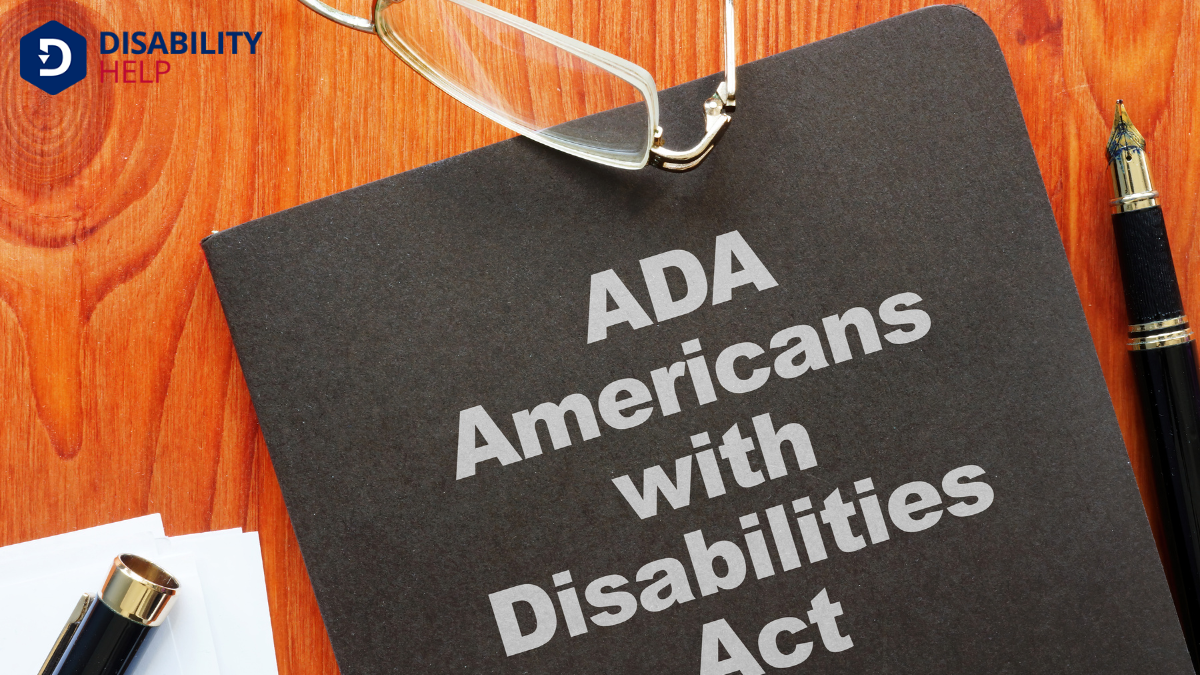Let's explore disability harassment, a vital issue that affects many in our society. It involves actions that belittle or mistreat individuals based on their disabilities, creating hostile environments. Legally, protections such as the ADA offer pathways for victims to seek justice. But what exactly constitutes harassment, and how can we effectively address it within our communities? Understanding these elements is essential, so let's examine how the law supports those impacted.
Key Takeaways
- Disability harassment involves mistreatment or belittlement due to a person's disability, creating an intimidating environment.
- Harassment can be verbal, physical, or subtle actions, affecting dignity and equality.
- Legal frameworks like the ADA and EEOC provide protection and recourse against disability harassment.
- Victims can file complaints or lawsuits, requiring documentation of incidents to seek justice.
- Organizations must implement policies, training, and reporting mechanisms to prevent and address harassment.
Defining Disability Harassment
Disability harassment, a form of discrimination, occurs when someone is mistreated or belittled due to their disability. We encounter such situations in various settings, such as workplaces, schools, and public spaces.
It's essential to understand that harassment can be verbal, physical, or even subtle actions that create an intimidating environment. We must be aware of the impact these behaviors have on individuals with disabilities, as they can lead to emotional distress and exclusion.
In defining disability harassment, we focus on actions that undermine dignity and equality. It's about recognizing the inherent value of every person, regardless of their abilities.
As a society, we've a responsibility to foster environments that respect and uplift everyone. Let's commit to creating spaces where all individuals feel safe and valued.
Recognizing Different Forms of Harassment

When we aim to recognize different forms of harassment, it's vital to understand its various manifestations. Harassment can be overt, like verbal threats or derogatory comments about someone's disability.
We might also encounter subtle forms, such as exclusion from activities or ignoring contributions, which can be just as damaging. It's important to pay attention to nonverbal actions, too—eye-rolling or dismissive gestures can speak volumes.
We should consider institutional practices that marginalize individuals with disabilities. Policies or environments that aren't accommodating can constitute harassment, even if unintentional.
By staying aware of these forms, we're better equipped to identify when harassment occurs. Recognizing these patterns helps us address issues proactively, ensuring a respectful and inclusive environment for everyone.
Let's commit to understanding and preventing harassment in all its forms.
The Impact on Individuals With Disabilities
Let's consider how disability harassment affects individuals at an emotional and psychological level.
We can't ignore the additional barriers to accessibilityThe design of products, devices, services, or environments to be usable by people with disabilities.... it creates, making everyday life even more challenging.
Together, we can better understand these impacts and advocate for effective solutions.
Emotional and Psychological Effects
Although often overlooked, the emotional and psychological effects of harassment on individuals with disabilities can be profound and lasting. We must recognize the depth of this impact to foster a supportive environment.
Harassment can erode self-esteem and lead to chronic stress and anxiety. Let’s consider:
- Isolation: Harassment often causes individuals to withdraw, leading to feelings of loneliness and exclusion.
- Self-doubt: Constant negative interactions can make individuals question their worth and abilities.
- Fear: The threat of repeated harassment generates a pervasive sense of fear, affecting one’s willingness to engage with others.
- DepressionA mental health condition marked by persistent feelings of sadness and loss of interest.: Persistent negative experiences can greatly increase the risk of depression, impacting overall mental health.
Acknowledging these effects is essential as we endeavor to create inclusive and respectful spaces for everyone.
Barriers to Accessibility
Accessibility barriers considerably impact individuals with disabilities, limiting their ability to participate fully in society. When we encounter steps without ramps, websites without screen readerSoftware that reads aloud the text on a computer screen, used by individuals who are blind or visual... compatibility, or public transport without appropriate accommodationsModifications or adjustments in healthcare settings to support patients with disabilities., we're reminded of how these barriers create exclusion.
They don't just hinder access but also perpetuate feelings of isolation and frustration.
We must recognize that accessibility isn't simply a convenience; it's a necessity. By acknowledging the challenges faced by those with disabilities, we can advocate for changes that promote inclusivity.
This involves supporting policies that enforce accessibility standards, encouraging businesses to adopt inclusive practices, and educating ourselves about the diverse needs of our communities.
Together, we can work towards a society where everyone has equal accessThe principle that all individuals, including those with disabilities, should have equal opportunity... and opportunity.
Legal Frameworks Addressing Harassment
When tackling the pervasive issue of disability harassment, understanding the legal frameworks in place is essential. These legal structures offer protection and recourse for those affected. Here’s what we need to know:
- Employment Law Protections: Various laws protect employees from harassment based on disability in the workplace, ensuring a safe and equitable environment.
- Educational Safeguards: Schools and colleges must adhere to specific regulations to prevent harassment and discrimination against students with disabilities.
- State Laws: Many states have enacted their own laws, complementing federal protections and providing additional avenues for recourse.
- Legal Recourse: Victims can file complaints or lawsuits. It’s vital to document incidents and seek legal advice to pursue justice effectively.
An Overview of the Americans With Disabilities Act (ADA)

The Americans with Disabilities Act (ADA)A U.S. law that prohibits discrimination against individuals with disabilities in all areas of publi... serves as a cornerstone in the fight against disability discriminationUnfair treatment of individuals based on their disability in areas such as employment, education, an..., providing extensive civil rightsThe rights of individuals to receive equal treatment under the law, including protection against dis... protections. Enacted in 1990, the ADA prohibits discrimination against individuals with disabilities in various sectors, including employment, public services, transportation, and telecommunications.
We see its impact in creating inclusive environments where people with disabilities can participate fully in society.
Under the ADA, employers are required to provide reasonable accommodations to qualified employees with disabilities, ensuring equal opportunities in the workplace. It also mandates accessibility in public spaces, making sure everyone can access essential services.
Filing a Complaint: The Process Explained
Filing a complaint under the Americans with Disabilities Act (ADA) might seem intimidating, but understanding the process can empower us to take action.
We can begin by gathering relevant information and documentation to support our case. Here's a simplified process to guide us:
- Document the Incident: Record dates, times, locations, and any witnesses involved. This information will be essential.
- Contact the Equal Employment Opportunity Commission (EEOC): Submit a charge of discrimination. This can be done online, by phone, or in person.
- Wait for Investigation: The EEOC will assess the complaint, conducting interviews and gathering evidence.
- Receive Determination: The EEOC will issue a finding, which may lead to mediation or legal action.
Role of Organizations in Preventing Harassment
Although addressing harassment is essential, organizations play a pivotal role in preventing it from occurring in the first place.
We, as organizations, must cultivate a culture that values respect and inclusivity. This begins with establishing clear policies that define unacceptable behaviors and outline consequences.
Regular training sessions can raise awareness and educate staff about disability harassment, ensuring everyone understands their role in fostering a safe environment.
We need to encourage open communication, where employees feel comfortable reporting incidents without fear of retaliation.
By setting up accessible reporting mechanisms, we demonstrate our commitment to addressing issues promptly.
Leadership should model respectful behavior, reinforcing the importance of these values throughout the organization.
Together, we can create a workplace where harassment is actively prevented.
Strategies for Creating Inclusive Environments

Creating inclusive environments requires more than just policies; it demands intentional actions and attitudes from everyone involved.
We must commit to fostering spaces where everyone feels valued and respected. Here's how we can make that happen:
- Education and Training: We should provide regular training sessions on disability awareness and sensitivity to help everyone understand diverse needs.
- Open Communication: Encouraging open dialogues can help us address concerns promptly and guarantee everyone’s voice is heard and respected.
- Accessible Spaces: Let's guarantee physical and digital environments are accessible to all by removing barriers that limit participation.
- Inclusive Policies: We should develop and enforce policies that promote inclusivity, ensuring they're clearly communicated and consistently applied.
Legal Recourse and Remedies for Victims
While fostering inclusive environments is foundational, we must also address what happens when these efforts fall short. When disability harassment occurs, legal recourse becomes fundamental.
We can pursue justice through laws like the Americans with Disabilities Act (ADA), which protects us from discrimination in workplaces and public spaces. Filing a complaint with the Equal Employment Opportunity Commission (EEOC) is a significant step. It allows us to seek remedies like mediation, settlements, or even lawsuits if necessary.
Victims have legal rights to compensation for emotional distress, lost wages, or reinstatement of employment. It's essential to document incidents meticulously and seek legal counsel to navigate this process.
Together, we can guarantee that our rights are upheld and that offenders are held accountable for their actions.
Case Studies Highlighting Legal Outcomes
Let's explore some notable court decisions that have shaped the landscape of disability harassment cases.
By examining these key legal precedents, we can better understand how the judicial system addresses these issues.
Together, we'll see how these outcomes inform current legal strategies and protections for individuals facing harassment.
Notable Court Decisions
When examining disability harassment, it’s essential to explore notable court decisions that have shaped legal outcomes and precedents. These cases provide clarity and understanding of the legal landscape surrounding disability harassment.
Let’s take a closer look at some significant decisions:
- Toyota Motor Manufacturing, Kentucky, Inc. v. Williams: This case redefined what constitutes a disability, emphasizing the substantial limitation of major life activities.
- Sutton v. United Air Lines, Inc.: The court ruled that mitigating measures, such as corrective lenses, should be considered when determining disability status.
- Barnett v. U.S. Air, Inc.: This decision highlighted that reasonable accommodationModifications or adjustments to a job or environment that enable a person with a disability to perfo... mightn't include reassignment if it conflicts with established seniority systems.
- Chevron U.S.A. Inc. v. Echazabal: The ruling allowed employers to refuse hiring individuals if their health would be jeopardized by job conditions.
These decisions collectively influence current interpretations and enforcement of disability rightsThe legal and human rights afforded to individuals with disabilities, often the focus of advocacy an....
Key Legal Precedents
Building upon our examination of notable court decisions, we now focus on key legal precedents through specific case studies that highlight the outcomes of disability harassment claims.
One pivotal case is *Toyota Motor Manufacturing, Kentucky, Inc. v. Williams*, which clarified the interpretation of "disability" under the Americans with Disabilities Act. This case emphasized the importance of considering both the severity and duration of an impairmentA loss or abnormality of a body structure or function, whether physical, mental, or sensory, often a... when determining if it qualifies as a disability.
Another significant case, *EEOC v. AutoZone*, reinforced that employers mustn't create a hostile work environment for employees with disabilities. The court ruled that AutoZone failed to prevent harassment and was liable for damages.
These cases demonstrate how legal precedents shape our understanding of rights and protections for individuals facing disability harassment.
Frequently Asked Questions
How Does Disability Harassment Impact Mental Health?
It is understood that disability harassment deeply affects mental health, leading to anxiety, depression, and isolation. Let's support each other by fostering empathyThe ability to understand and share the feelings of another, particularly important in understanding... and understanding. Together, we can create inclusive environments where everyone feels safe and valued.
Can Bystanders Be Held Accountable for Not Reporting Harassment?
Yes, bystanders can face consequences if they don’t report harassment, especially if their silence contributes to a hostile environment. We should all take responsibility to guarantee everyone feels safe and respected in our communities.
What Role Does Technology Play in Disability Harassment?
Technology's role in disability harassment is significant, as it can both facilitate and amplify harmful behavior. We should understand these dynamics and work together to create inclusive, safe digital spaces for everyone, preventing harassment from occurring.
Are There Differences in Harassment Laws Internationally?
International harassment laws can differ considerably. We should consider each country's specific legal framework and cultural context. Understanding these differences helps us navigate global environments effectively, ensuring we're respectful and compliant wherever we operate.
How Can Schools Educate Students on Disability Harassment?
Let's encourage schools to integrate disability awareness programs into their curriculum. By fostering open discussions, interactive workshops, and real-life testimonials, we can help students understand, empathize, and actively prevent disability harassment. Together, we create inclusive environments.
Conclusion
In addressing disability harassment, we must prioritize fostering inclusive environments where everyone feels safe and respected. By understanding the legal protections like the ADA and actively implementing strategies to prevent harassment, we can make a significant impact. Let's work together to document incidents, seek legal counsel when necessary, and support each other. With a collective effort, we can uphold the dignity of individuals with disabilities and guarantee that their rights are protected and respected.






